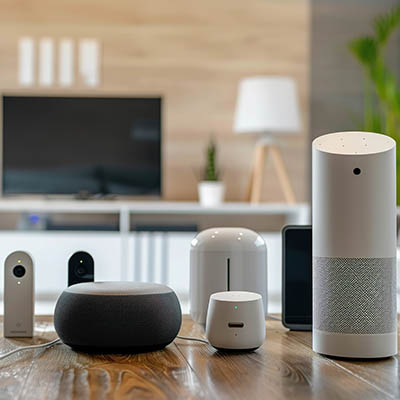Artificial intelligence is becoming ubiquitous in the business technology sector and for good reason. It’s allowing small and medium-sized businesses to do more and compete with businesses that were previously just ahead of them. Today, we want to go over some (reasonably) easy ways you can use AI in your IT operations to make your business more efficient.
Technology drives today’s businesses; if you haven’t embraced modern technology, you’re missing out. So much of what used to make business frustrating can now be done conveniently through technology, including many old analog tasks. Today, we want to highlight some ways you can use technology to seriously upgrade your company’s operations.
Smart speakers have been around for a while now, but let’s be real… have they actually changed the world? Not really. They’re great for blasting music, setting reminders, and answering random trivia questions, but beyond that? Meh.
We all have old friends; not the ones that you went to high school with, but oldish technology that we simply can’t bring ourselves to upgrade away from. At some point, however, old technology stops being a trusty sidekick and starts feeling like an anchor. If your devices are making life harder instead of easier, it might be time to say goodbye. Here’s how to know when it’s time to let go and upgrade.
Skype is dead; long live Microsoft Teams. At least, that’s the position that Microsoft has taken. The software company is discontinuing the two-decade-old communication application Skype, shifting focus to the more recent Teams platform, with the app’s last day being scheduled for May 5. Let’s review what this means and reflect on Skype’s impact on modern technology.
We’ve made it to the point where humans need to prove they’re real people to access systems, and one of the most common ways to do this is through the use of CAPTCHA technology. Completely Automated Public Turing test(s) to tell Computers and Humans Apart (try saying that with your mouth full) are everywhere, yet computers still struggle to actually crack these tests, unlike other methods of security. Why are they so successful at detecting automated bots?
Got a new computer for the holidays? That’s awesome! But before you get too excited, let’s talk about your old device. You can’t just toss it out—there’s a right way to get rid of it that keeps your personal info safe and the environment happy. In today’s blog, we discuss what to do with your old computer.
Smart products are everywhere nowadays, ranging from video doorbells and assistants to more niche appliances… including breast pumps and floss dispensers. However, despite all of these devices being very different, most have one thing in common. It just so happens that the U.S. Federal Trade Commission is concerned about this commonality, as it’s the fact that many don’t publicize when updates are available—or even provide them at all.
For many, the New Year is a time of renewal and fresh starts, allowing us to turn the page and begin our next lap around the sun on the right foot. That said, the holiday is also steeped in traditions—for instance, the Times Square celebration, where a massive ball is slowly dropped to signify the countdown until the calendar officially shifts from one year to the next. This tradition has a fascinating history, based mainly on the technology of the times.
While we all know how much magic the workshops up at the North Pole rely on to produce presents for the good children of the world, we have it on good authority that they also rely on quite a bit of technology. For instance, there are a lot of letters that need to be sorted and read before Santa’s big ride. Let’s read up on what our partners up north frequently deal with in their critical operations.










